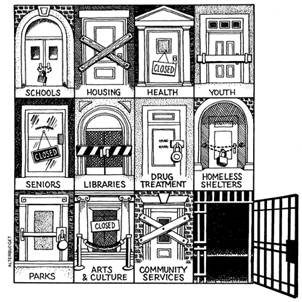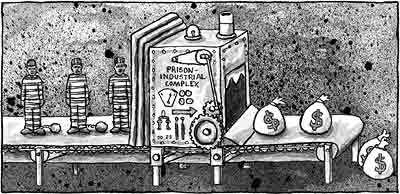REDUCING RECIDIVISM IN AMERICA: A LOOK INTO WHY SURVEILLANCE- ORIENTED PROBATION METHODS, SPECIFICALLY DRUG TESTING, IS A WASTE OF TIME AND MONEY
According to Adrienne Poteat, the Deputy Director for the Court Services and Offender Supervision Agency for the District of Columbia (CSOSA), the mission of CSOSA is to increase public safety, prevent crime, reduce recidivism, and support the fair administration of justice in close collaboration with the community. Almost all of the parole agencies in the country have similar mission statements to the one found on CSOSA”s website. Further, most of the agencies’ websites have various links to the services they offer to offenders who are placed on community supervision. Parole agencies design their websites to give the public the impression that the agency commits to a rehabilitation ideal that believes the purpose of parole is to change the offender’s behavior rather than to simply punish. Indeed, a rehabilitation or service- oriented parole system model would be ideal because providing services would increase an individual”s likelihood of becoming functional in society; an individual who is functional in society is less likely to continue to engage in criminal activities. If parole agencies could successfully implement the policies that they advertise on their websites, recidivism would likely decrease.
For instance, the Management’s Discussion and Analysis section of CSOSA’s Financial Report states that the following dynamic factors can be controlled to prevent recidivism: substance abuse, educational status, employability, community and social networks, patterns of thinking about criminality and authority, and the offender’s attitudes and associations. Although CSOSA’s strategic plan mentions several factors that it should focus on to reduce recidivism, a look at CSOSA’s financial reports reveal that it spends far more money on substance abuse control than all of the other factors combined.
Part of CSOSA’s misallocated budget can be explained by analyzing its strategic plan, which operates under a variety of false assumptions. Specifically, the strategic plan justifies the vast amount of money allocated to drug surveillance because “numerous studies have conclusively documented the close correlation between criminal activity and the use of alcohol and other drugs.” The above statement problematically infers that drug usage causes crime because the two are correlated. That would be like concluding that sleeping with one’s shoes on causes headaches because the two variables are correlated. However, this is a false conclusion because abusing alcohol, (a variable not tested for in this simple correlation calculation), is actually the cause of both waking up with a headache and sleeping with one’s shoes on. In fact, much research concludes that drug usage and crime are both the effects of numerous, yet related social and personal problems such as lack of educational and vocational training, poverty, etc. However, government agencies that are allocated hundreds of millions of dollars from states and city’s government budgets, insist on relying on problematic assumptions when developing strategic plans.
While it is not proven that drug usage directly relates to any crime other than drug crimes, it is hard to argue that released offenders with drug addictions could have a harder time becoming functional in society than those who do not have a drug addiction. There is currently a debate amongst scholars as to what is the most effective way to solve the problem of drug addiction. Most government agencies believe that drug addiction should be treated as a criminal matter. Vast amounts of research suggest  that treating drug addiction as an illness is a more effective means at curing addiction than treating drug addiction as a crime. Yet, a review of CSOSA’s financial statements reveals that it uses far more money on surveillance of drug abusers than it spends on treatment of drug abusers. Likewise, an analysis of parole agencies nationwide reveals that most agencies operate under the same false assumptions in which CSOSA operates.
that treating drug addiction as an illness is a more effective means at curing addiction than treating drug addiction as a crime. Yet, a review of CSOSA’s financial statements reveals that it uses far more money on surveillance of drug abusers than it spends on treatment of drug abusers. Likewise, an analysis of parole agencies nationwide reveals that most agencies operate under the same false assumptions in which CSOSA operates.
This paper asserts that a dramatic overhaul of the way parole agencies operate is needed if policymakers truly want to make communities safer. My research shows that the best way to make communities safer is to provide services that increase the likelihood that released offenders become functional in society and less likely to engage in criminal behavior. Further, my research shows that providing services is more cost-efficient than providing a surveillance-based parole management method. Specifically, the money spent on drug testing released offenders would be much better spent on providing released offenders drug treatment, education, housing options, and vocational training.
Part I of this paper provides a summary of CSOSA”s resource allocation, which is heavily weighted towards surveillance and drug testing. Part II challenges the assumption guiding most parole agencies operations, which is drug usage causes crime. Part III presents evidence that shows urine testing requires an extreme amount of time and resources to be accurate, and that even when administered properly, it is still an unreliable method in detecting drug users. Part IV provides evidence to show that treating drug addiction as an illness is more effective at curing drug addiction and more cost efficient than treating drug addiction as a crime. Finally, part V shows case studies of successful service programs.

